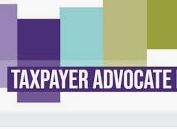
During February, Taxpayer Advocates Service’s Local Taxpayer Advocates (LTAs) are in Washington, D.C., presenting the National Taxpayer Advocate’s 2019 Annual Report to Senators and House Members whose local offices they serve.
The law requires TAS to place at least one LTA in every state to assist taxpayers who are experiencing problems with the IRS. Over the past seven years, TAS has received an annual average of about 218,000 cases, and an annual average of about 15,000 of these cases (roughly seven percent), have been referred by congressional offices.
To facilitate coordination, TAS pairs every Senate and House office with an LTA office within the state the Senator or House member represents. LTAs work with congressional offices by sharing information about trends they are seeing in their casework and by partnering with them to disseminate information about filing deadlines, changes in the law, and other information that may be useful for taxpayers.
Once a year, typically around the first week of February, our Local Taxpayer Advocates go to Washington for our “Congressional Affairs Program.” During this “CAP” conference, they receive training on technical issues that they bring back to their local offices and teach to the case advocates they supervise, and they visit the Washington offices of the Senators and House members whose local offices they assist.
During their meetings on Capitol Hill, the Local Taxpayer Advocates(LTAs) talk about the most serious tax problems encountered by taxpayers and describe legislative recommendations to address those problems, as detailed in the National Taxpayer Advocate’s annual report. Because Members of Congress often meet personally with visitors from their districts, a significant number of LTAs speak directly with Members. Others meet with staff.
So, what are some of the messages the LTAs will be conveying this year?
The first three “most serious problem” sections of this year’s report are interrelated and, in combination, provide the message we hope to convey. In order, they are (i) poor customer service; (ii) outdated information technology (IT) systems; and (iii) inadequate funding.
Here is how they interrelate:
Customer service. We believe improving service must be the #1 priority for the IRS. During fiscal year (FY) 2019, for example, the IRS received nearly 100 million telephone calls, yet employees were able to answer only 29 percent. At the same time, the IRS’s fraud detection filters were again plagued by high false positive rates, forcing hundreds of thousands of taxpayers who had filed legitimate returns to wait weeks or even months to receive their refunds. Two leading benchmarks again found the IRS to be among the lowest performing federal agencies in providing a positive customer experience. We are not the only ones who believe improving taxpayer service should be the IRS’s top priority. During 2019, Congress enacted the most significant IRS reform legislation since 1998 and made its priority clear by pointedly titling it the “Taxpayer First Act.”
IT Modernization. In order to improve taxpayer service (as well as compliance), the IRS desperately needs to upgrade its technology. Some examples: The IRS still has not been able to fully implement customer callback technology, which would allow taxpayers who call at peak times to elect to receive a callback rather than wait on hold. Key taxpayer data is spread across some 60 case management systems, limiting the IRS’s ability to offer robust online taxpayer accounts; an integrated case management system is in the works and is desperately needed. Better technology should allow the IRS to address the annual problem of high false positive rates in its fraud detection filters by helping it determine quickly which business rules are generating the bulk of the false positives and allowing it to refine them in real time. These are just examples. The ramifications of outdated technology are felt across the agency. If the IRS can substantially improve its IT systems, taxpayer service will see corresponding improvements — and probably significant ones.
Funding. As we noted in our recent report, IRS funding has been cut by more than 20 percent on an inflation-adjusted basis since FY 2010, and the number of full-time equivalent employees has declined by 22 percent. This lack of resources has limited the agency’s ability to modernize its IT systems as well as to hire more customer service representatives to handle taxpayer calls. Over the past two decades, there have been times when the IRS has fumbled IT initiatives, and its mistakes have created an impression that it might squander additional funding again. This is a legitimate concern, but as we said in our report, we believe the IRS Integrated Modernization Business Plan released last April is well considered, and with proper oversight, we believe the IRS would put additional funds to good use.
So, to summarize the message our LTAs will be conveying: We agree with Congress that the #1 priority for the IRS is to put taxpayers first. The IRS should be a taxpayer-centric organization, and taxpayers should be able to interact easily with the IRS through whichever communications channel they prefer — in person, by phone, or online. To achieve that goal, the IRS must modernize its IT systems and hire more customer service representatives. And to do all these things, the IRS must be properly funded.
Note From TaxConnections: If you are a taxpayer and are experiencing problems with the IRS please tell us your story. We will bring your stories to the Attention of the NTA for help.


















Recent Comments